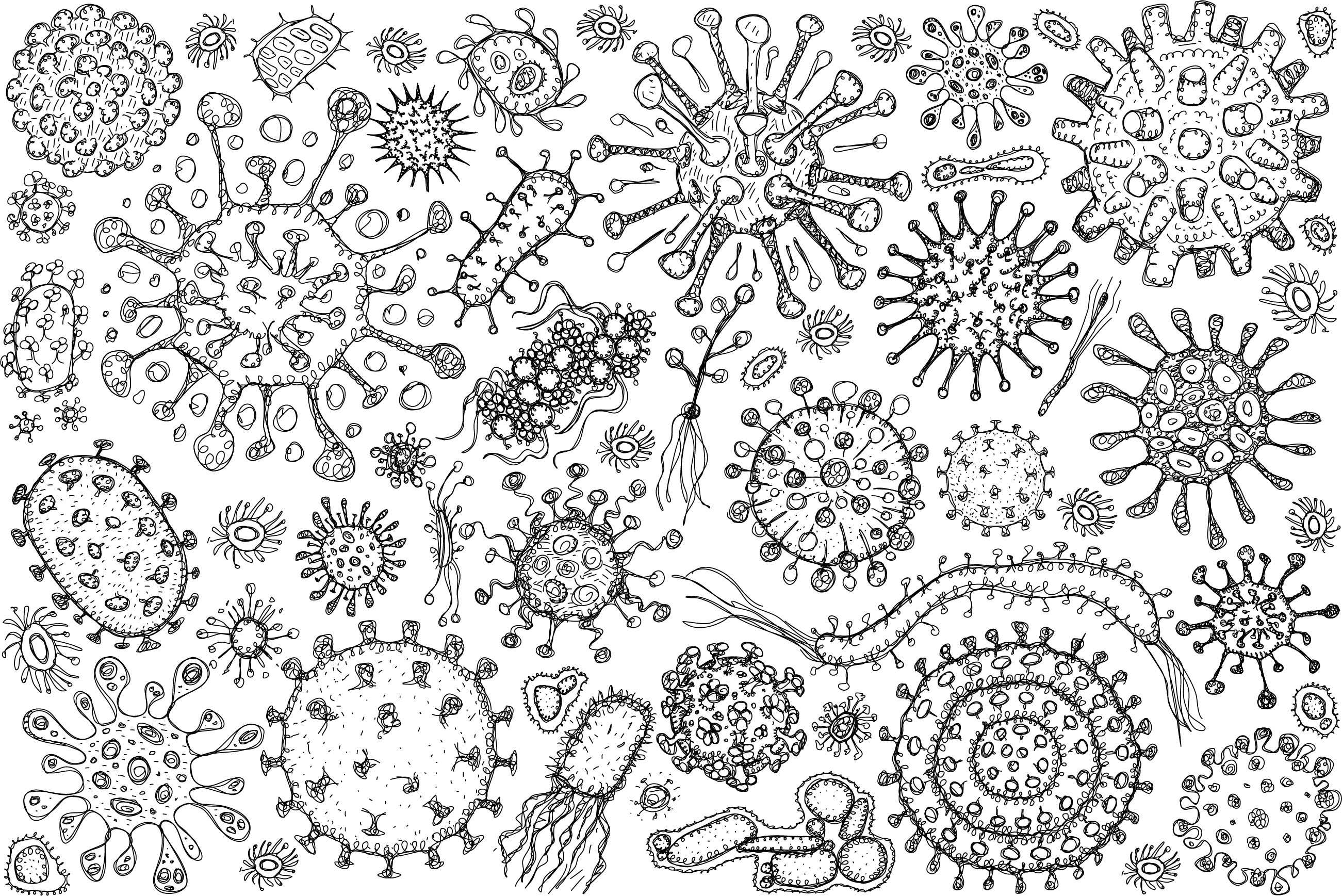
World Sexual Health Day is a national day that raises awareness, reduces stigma, and improves access to essential sexual health resources. This year’s theme is “Consent” - a crucial and fundamental element of any healthy sexual encounter.
To acknowledge this day, researchers from the Faculty of Science are sharing their scientific research in relation to sexual health, how scientific knowledge plays an important role in increasing informed consent, and how consent is honoured in collecting research.
In this Q&A from the immunology perspective of the Department of Microbiology and Immunology, Professor Maria Tokuyama, PhD student W. Austin Guild, and MSc student Ananya Saraph from the Tokuyama lab share their research on whether and how endogenous retroviruses (ERVs) could protect against herpes simplex virus 2 (HSV-2) infections.
Outline your research project:
Our research focuses on herpes simplex virus 2 (HSV-2), a sexually transmitted virus that causes lifelong infection and disease. HSV-2 infection affects millions of people around the world, and it disproportionally affects women over men. Despite this global burden, we still do not have a vaccine against HSV-2. The rise in mRNA vaccines may certainly change the course. In fact, an mRNA vaccine against genital herpes lesions is currently in Phase I clinical trials. Treatment options for HSV-2 are also sparse, and existing treatment does not completely clear the infection. Therefore, there is an urgent need to find new ways of preventing or treating HSV-2 infection.
The goal of our research is to find new factors that influence outcomes of infection. Ultimately, we are interested in developing preventative or prophylactic therapies for HSV-2 that could also be repurposed to treat other genital infections. To do this, the main factors that we are investigating are called endogenous retroviruses, or ERVs. ERVs are DNA sequences that are part of all of our genomes (i.e. endogenous), but they originated from viruses (i.e. retroviruses). ERVs are part of us, yet they also have foreign virus-like properties. This unique characteristic of ERVs makes them very interesting to study, especially as viral immunologists who study the interaction between viruses and the immune system. We think that ERVs have been overlooked in our understanding of the immune system.
In fact, our lab has recently shown that ERVs can have protective effects against HSV-2 disease in a mouse model of genital HSV-2 infection (Jayewickreme R and Mao T et al. Front. Imm 2022). So how are ERVs doing this? Are ERVs enhancing the vaginal immune response to HSV-2? Are ERVs changing the local vaginal environment to prevent tissue damage associated with HSV-2 infection? Are ERVs blocking HSV-2 replication? These are questions that Ananya and Austin are trying to answer as part of their graduate degrees.

What do you hope to achieve with this research in the future?
As previously mentioned, we urgently need new ways to combat HSV-2 infection. We are building on our research interest and expertise in ERVs to design novel therapies against HSV-2. If we understand how ERVs are improving outcomes of disease caused by HSV-2, we can use that knowledge to design therapies that boost this response. Our hypothesis is that ERVs are modulating or enhancing the ability of the host to deal with HSV-2. If this is the case, then we can also envision that the same effect can help deal with other genital infections or sexually transmitted viruses. Our studies could therefore have broader impact on sexually transmitted disease and women’s health.
What inspired you to research ERVs and HSV-2?
This is what initially got us into studying the role of ERVs in response to viral infection. The inspiration for HSV-2 originally came from Dr. Tokuyama’s previous work in the lab of Dr. Akiko Iwasaki at Yale University, who has extensively studied HSV-2 for decades and had all of the tools necessary to initiate this research. Studying HSV-2 or any other model of vaginal infection is important because women’s health has historically been understudied, and we desperately need more research to understand the immune environment of the female genital tract. We hope that our research can contribute not only towards dealing with HSV-2 but also towards understanding important biology of the female genital tract that can ultimately improve women’s health.
What challenges do you face working within this specific research topic?
HSV-2 predominantly affects women more than men, with women about twice as likely to be infected with HSV-2 than men. Infection studies that involve the female genital tract are less common compared to infection studies of other sites of the body like the intestine or the lung. Although we primarily work with animal models of infection, the same is true for human studies. Because the knowledge base is more limited, fitting all of the puzzle pieces together in our research can be challenging. We need more work in this area to improve outcomes of sexually-transmitted disease, especially for women’s health.
How does your work help de-stigmatize the importance of sexual health and research?
Our research highlights areas that still remain unanswered for sexually-transmitted infections like HSV-2. As we continue to share our findings and discuss the biology of infection responses to HSV-2, we hope to get more people to think about sexual health, women’s health in particular. Ultimately, more research in this area can lead to new ways of treating sexually-transmitted infections and benefit a lot of people in Canada and beyond.
Quick links:
- Read more about the sexual health research going on at UBC’s Faculty of Science
- Learn more about the Tokuyama Lab
- Learn more about World Sexual Health Day
Photography by Leslie Kennah, Michael Smith Laboratories

